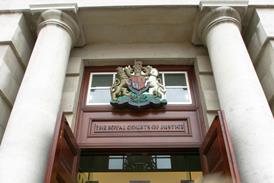Fresh evidence has emerged to suggest that the much-touted diversification of the legal profession is stalling – despite the welter of initiatives that exist to promote diversity.
Ahead of International Women’s Day, former Law Society president Lucy Scott-Moncrieff called on law firms to examine why women’s talents are ‘woefully underused’. Women make up half the profession, but are still far less likely than men to make partner.
Of 30,289 partners in private practice during 2012, 73% (22,199) were men and just 27% (8,090) women.
Scott-Moncrieff, chair of the Society’s equality and diversity committee, said: ‘When you have a profession where the majority of partners – the very top of the tree – are men, then something is going wrong. Women’s talents are woefully underused in the legal profession. It makes no economic or business sense.’
A study by international firm Eversheds has found that just 57% of young women lawyers aspire to partnership, compared with 77% of men.
The report, 21st Century Law Firm: Inheriting a New World, fears a ‘brain drain’ from the traditional firm model because it does not provide a flexible environment. Twice as many women (51%) as men rate flexible working as crucial to career progression.
Client hostility can be a problem, according to Stephen Wilkinson (pictured), co-chair of Herbert Smith Freehills’ gender committee. ‘Managers [must be] prepared to stand up to the client,’ he told a Gazette roundtable on women in the law, ‘or at least guarantee to the client there will be no difference in service [from flexible working].’
Efforts to get more solicitors on to the bench have also stalled. The chairman of the Judicial Appointments Commission (JAC) told parliament that the number of solicitors in the judiciary is actually falling, admitting progress in improving diversity has been ‘patchy’.
Christopher Stephens told the Commons Justice Committee that the position for solicitor judges is ‘very bleak’ at the top of the judiciary, with only one High Court judge, a handful of circuit judges and no solicitors in the Court of Appeal or Supreme Court.
Stephens admitted the billable hour and partnership model makes some firms ‘pretty hostile’ to the idea of members pursuing a judicial career.
The outlook also appears bleak for black and minority ethnic groups. Although the JAC has consistently recommended 8-10% BME applicants, Stephens accepted it had not managed to ‘nudge’ the figure upwards.


























7 Readers' comments